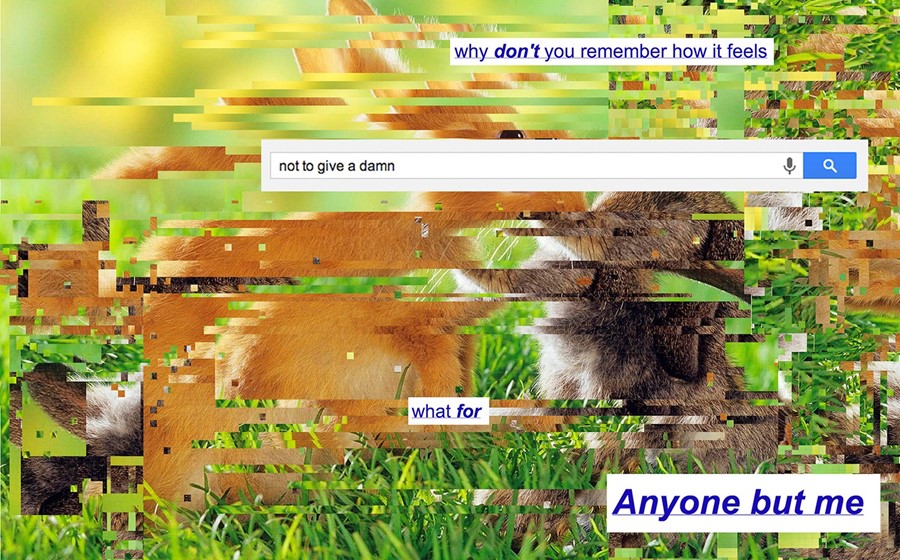From Gchat to boosting, here's our 26-letter guide to literature's most misunderstood genre
Despite drawing mobs of both detractors and imitators, Alt Lit remains a mystery to many. What even is it? A genre? A community? Bare-faced marketing hype? From Adderall to Xanax (via boosting, Gchat and quickshit) we run you through some of the defining characteristics of the form as it now stands.

A IS FOR ALT LIT GOSSIP
In 2012, Vol.1 Brooklyn interviewed three of the more prominent figures associated with Alt Lit. Tellingly, all three suggested that the name “Alt Lit” was popularised - and even coined - by Alt Lit Gossip, launched by Frank Hinton in late-2011. Before the site’s existence, there had been a bunch of attempts to categorise the literature that was appearing online. Were Tao Lin and his acolytes part of the New Sincerity? Was Steve Roggenbuck’s work Neo-Dadaist? ALG’s list of The Pillars of ▲L† LI✞ styles itself as a short introduction for those “new to Alt Lit”.
B IS FOR BOOST
Part-catchphrase, part-ideology, Steve Roggenbuck’s battle cry “boost” is an emblem of the mania and positivity that can be so divisive about some of his work. In a particularly “boosted” moment in June 2012, Roggenbuck (alongside Tao Lin) gave a reading in New York, during which he crowd surfed while reading a Walt Whitman poem. Roggenbuck has made videos which both describe his theory of boosting and show it in action. He is now also launching “Boost House” which, as well as being a publishing operation, is aiming to be an intentional community in Maine.
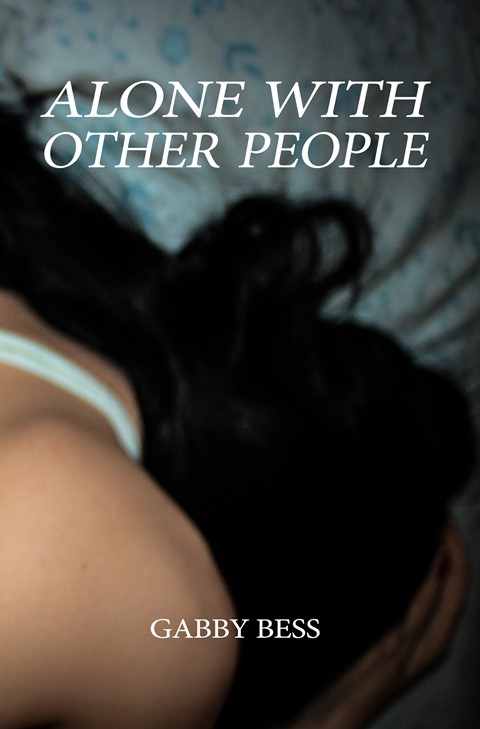
C IS FOR CIVIL COPING MECHANISMS
An independent publisher based out of Virginia, Civil Coping Mechanisms - and specifically its publisher-in-chief Michael J Seidlinger - has been one of loudest supporters of Alt Lit for some time. The press has published books by authors associated with Alt Lit such as Noah Cicero, Ana Carrete, Socrates Adams, Jordan Castro and Gabby Bess, as well as having Heiko Julien’s debut print book scheduled for the end of 2013. In 2014, they will publish 40 Likely to Die Before 40: An Introduction to Alt Lit, which claims - I think - to be the first ever Alt Lit anthology.
D IS FOR DENNIS COOPER
The prolific indie icon Dennis Cooper has repeatedly written and spoken of his admiration for Alt Lit, particularly on his blog The Weaklings. He selected works by authors including Ken Baumann, Scott McClanahan, Hannah Fantana and Mira Gonzalez in July’s “Best of 2013 so far” list. He also gave an impassioned seal of approval to Alt Lit in an interview with The Esoterrorist, saying: “I feel really, really positively about the writers that are generally making up Alt Lit now. I find it’s in a really interesting point right now… I’m curious to see what happens, because it could so easily be misread and dismissed for reasons that it doesn’t deserve to be.”
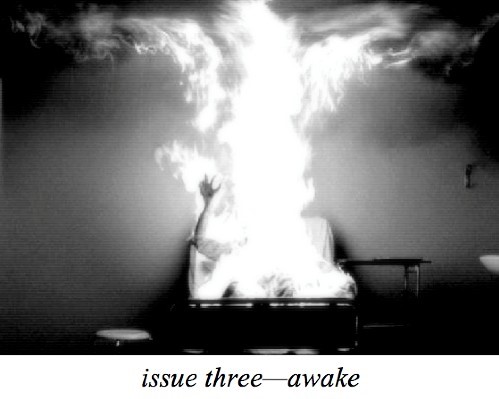
E IS FOR EXQUISITE CORPSE
Founded and run by Sarah Jean Alexander, Parlor pairs poets and - with only the title or the previous line in the poem for guidance - gets them to write an exquisite corpse poem together. An interesting experiment, a couple of the best examples are Maggie Lee and Frank Hinton’s poem and John Mortara and Rachel Hyman’s.
F IS FOR FLARF
Flarf is one of the earliest forms of what could be described as Alt Lit, mostly in the way in which it engages and utilises the internet; both flarf and Alt Lit engage with how texts and writers recycle the detritus of online and pop culture. The criticisms leveled at flarf and some of Alt Lit seem similar, too; as Douglas Rothschild said of flarf: “It’s all geared toward entertainment and punch lines and maybe a teeny little insight thrown in at the end. Poetry isn’t on my list of entertainment, it’s more important than that.”
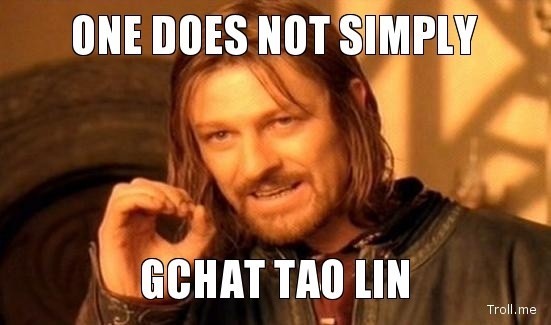
G IS FOR GCHAT
As a result mostly of its heavy presence in Tao Lin’s work, Gchat has become one of the hallmarks of Alt Lit, with Taipei’s release even seeing the coining of the word “Gpistolary”. In 2009, Lin published The Brandon Book Crisis, describing it as a “paperback “thriller” about book design”. The book is comprised of Gchat logs and email exchanges between Lin and Brandon Scott Gorrell, author of During My Nervous Breakdown I Want to Have a Biographer Present.
remember and fun to share.
— Horse ebooks (@Horse_ebooks) September 18, 2013
H IS FOR @HORSE_EBOOKS
Having been finally outed as human rather than bot, @horse_ebooks was described by The Atlantic as “the most successful piece of cyber fiction ever”. Whether or not that’s true (and what “cyber fiction” is) remains to be seen, but what Jacob Bakilla managed was groundbreaking in terms of poetics on the internet.
changing the name of this 'blog' to: I AM ALL LIT very concerned abt 'inclusion' 'very'
— i am alt lit (@alt_lit) October 17, 2013
I IS FOR I AM ALT LIT
I am Alt Lit is a one-time-anonymous review site run by Josh Spilker and Stephen Michael McDowell that assigns scores out of 100 (although they did give Taipei a 100.2 in their third review of it) to online and in-print works which they consider Alt Lit. Their team of writers have given perfect scores in the past to "Crapalachia" by Scott McClanahan, "Action, Figure" by Frank Hinton and "I am my own betrayal" by Guillaume Morissette.
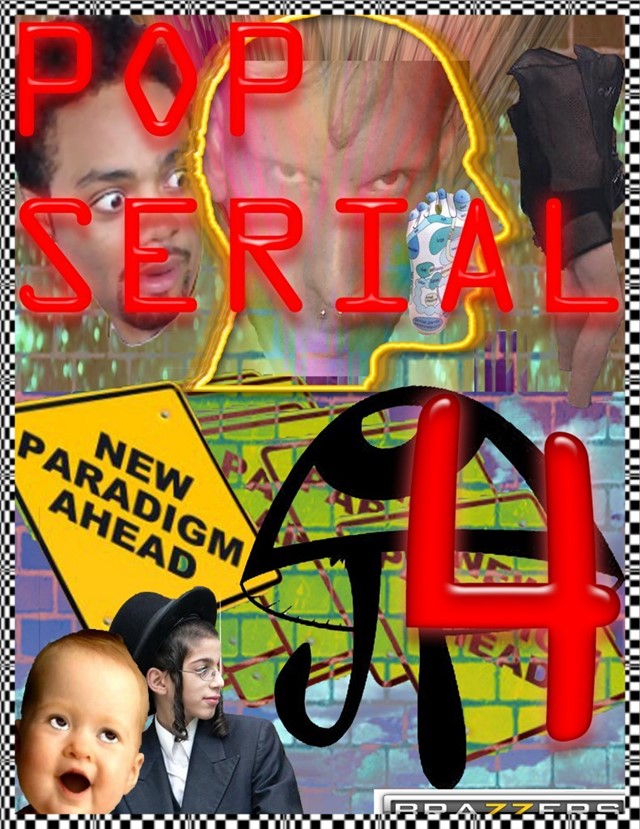
J IS FOR JOURNALS
Predictably, most journals associated with Alt Lit are online. Probably the most influential, and certainly one of the longest running, is Pop Serial which - along with its Tumblr - has at one time or another followed and supported the majority of better-known writers associated with Alt Lit. Other journals and magazines closely-related to Alt Lit include Metazen, Shabby Doll House, Keep This Bag Away From Children, tender, UP, New Wave Vomit, Have U Seen My Whale, Sadcore Dadwave and The Mall.
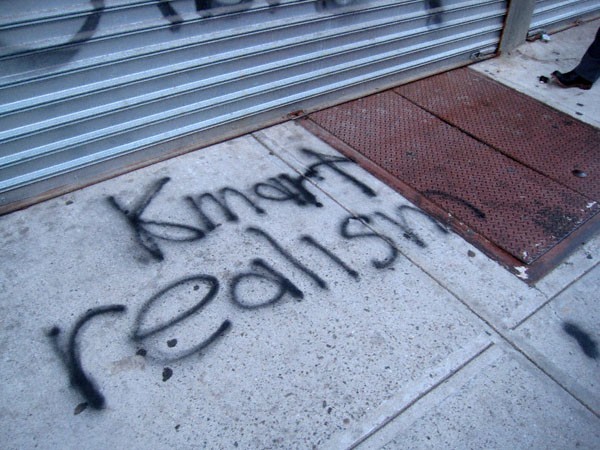
K IS FOR K-MART REALISM
The hyper-sparsity that characterised a lot of early Alt Lit (and for which it was often criticised) has been around a long time, from Hamsun through Hemingway to Carver and Beattie. Tao Lin wrote an introduction to and deconstruction of K-mart realism for This Recording, saying: ““K-Mart Realism” is a term a New York Times journalist or I think probably Tom Wolfe made up to group a lot of writers together in a shit-talking way.” The names “Alt Lit” and “K-mart realism” share a knowing, throwaway catchiness without actually precisely describing or defining anything much. And still, here we are.
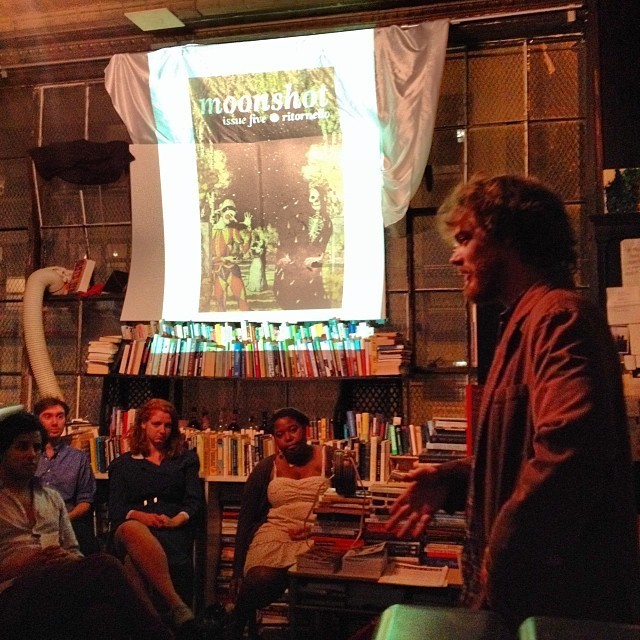
L IS FOR LIBRARIES
In the early years of Alt Lit, Alt Lit Library was set up by Jacob Steinberg, in an attempt to create an online repository of otherwise disconnected and disparate works from around the net. More recently, Mellow Pages Library opened in Bushwick, boasting a huge collection of books and zines, many of them related to Alt Lit. The library regularly hosts readings, was the victim of an elaborate Kanye-based prank, and has already grown enough to need to move into a larger space after less than a year of existence. Jacob Perkins, who founded the library with Matt Nelson, has even put together a hugely detailed, free guide to replicating their endeavour, “Where You Are Is Where This Library Goes”.

M IS FOR MACRO
Image macros were adopted early within Alt Lit in an attempt to utilise the channels through which people were already consuming culture on the internet. Internet Poetry, which is now run by Michael Hessel-Mial, is dedicated to publishing “poetry as screenshots, image macros, and other internet-based forms” and was recently featured on Dazed Digital’s top ten online lit magazines. Guillaume Morissette has notably often used images, utilising the stylings of infographics and charts, in his work.

N IS FOR NARCISSISM AND NAVEL-GAZING
A list of what’s “wrong” with Alt Lit could contain just about anything, since the only concrete thing that links the writing is probably its use of the internet as a starting point. All the same, one of the main criticisms leveled at much of the work is that it’s narcissistic or overly self-regarding. As a genre it’s been criticised for glorifying alienation, for its unoriginality, for self-promotion, for copycatting, for its hyper-neutrality, its banality. As Frank Hinton put it: “The plain fact is that the atmosphere of Alt Lit is clouded with a bunch of people just smearing shit around for the sake of the smearing, but the other thing I believe is that there is a large group of associated writers that primarily interact online making something wholly literary and beautiful.”

O IS FOR OTHER PEOPLE
Other People is a podcast hosted by Brad Listi, who is a vocal supporter of Alt Lit and who also founded The Nervous Breakdown. The podcast featured extended interviews with Alt Lit authors like Kendra Grant Malone, Megan Boyle, Gregory Sherl and Mira Gonzalez as well as more established writers like Sam Lipsyte and Jonathan Lethem.

P IS FOR PSEUDONYM
Some of the biggest names associated with Alt Lit are also the fakest: Frank Hinton, xTx, Sam Pink, Moon Temple, Beach Sloth, PeterBD and Janey Smith all maintain false identities or write under pseudonyms. xTx spoke about why she chooses to conceal her IRL identity during her own appearance on Other People. Perhaps for some the greater visibility on the internet brings with it the need (or, perhaps, greater possibility) for greater anonymity. Or maybe it’s just fun to be sneaky.

Q IS FOR #QUICKSHIT
Alt Lit has been dismissed as an “open mic for poetry”, lacking in the previous editorial standards required before inviting readers to engage with work. To some, however, this openness has been embraced as a strength. In an essay at Habitat, Walter Mackey used the concept of “#quickshit” to differentiate this quicker mode of writing from more worked-on forms, advising people: “Just stop editing. Stop revising”. As has been noted, this isn’t a new debate: Charles Bukowski had a similar view on this sort of thing.
I thought in a dream 'Adam Robinson is an editor's editor' and I woke up and it is true
— Amy McDaniel (@amysmcd) September 20, 2013
R IS FOR ROBINSON
Adam Robinson is the man behind Publishing Genius, the Baltimore-based publisher which recently featured at the top-spot of Flavorwire’s list of 25 Independent Presses that Prove This Is the Golden Age of Indie Publishing. The press has been a continual supporter of Alt Lit, publishing books by Timothy Willis Sanders, Matthew Savoca, and Mike Young. It also has a spin-off web magazine, Everyday Genius, which now houses almost five years’ worth of weekday-ly posted fiction and poetry, and featuring - at some point - almost everyone who has been closely associated with Alt Lit, including very recently two poems by Andrew Weatherhead.
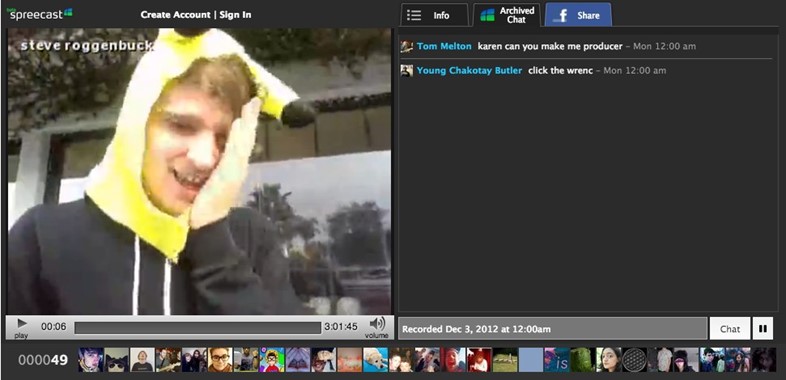
S IS FOR SPREECAST
Still officially only in Beta release, Spreecast gained popularity as a way of hosting readings online, with Steve Roggenbuck also using it to host his weekly TV show Illuminati Power Hour which ran throughout 2012. At its launch, and unlike most of its rivals, Spreecast synced and saved the chatlog, providing a living record and a surrogate for community, but also a kind of instantaneous feedback loop. A huge data failure in October 2012, which wiped the majority of videos saved on the site before then, seems to actually have done little to dampen the site’s popularity.

T IS FOR TUMBLR
There are a number of online presences more-or-less dedicated to Alt Lit including Chris Dankland’s The Neato Mosquito Show, Beach Sloth’s Tumblr, and Meta Knight’s Alt Lit Press. Alt Lit has also spawned a variety of themed pages focusing on things from portraits to computer desktops. Sam Riviere’s debut collection, 81 Austerities, started life as a series of posts on Tumblr before being published by Faber. Whatever Alt Lit is or isn’t, it remains a hugely popular tag on the microblogging site.

U IS FOR UNSURE
Michael Inscoe’s rarely-updated online journal, Unsure if i will allow my beard to grow for much longer, has featured work by people associated with Alt Lit including Sam Riviere’s “personal ad”, two poems by Stephanie Cook and Richard Chiem’s “he watches a girl in the window walk away for a long time and imagines his wife or Greta Gerwig”.
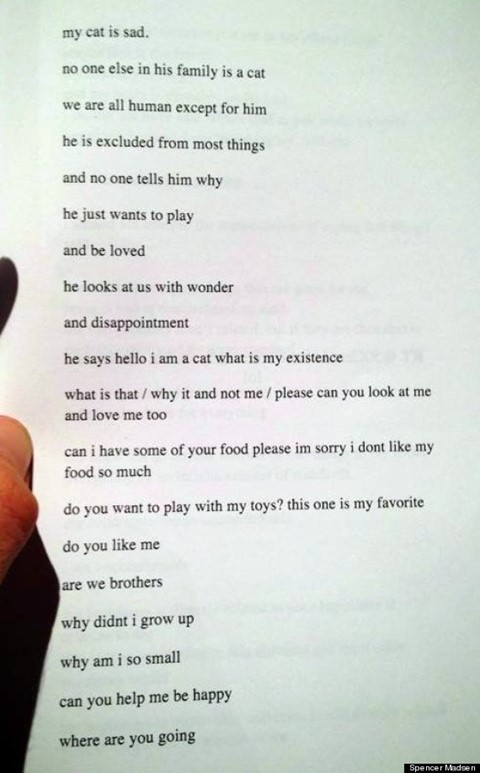
V IS FOR VIRAL
Perhaps the most-read Alt Lit poem of all time is Spencer Madsen's untitled poem about a cat from his debut poetry collection A Million Bears. The poem has racked up almost 300,000 notes on Tumblr and even coverage from The Huffington Post. Madsen, alongside Willis Plummer, recently founded Brooklyn-based publisher Sorry House, which has already published (and had to reprint) both Mira Gonzalez's debut poetry collection and Joke Book by Das Racist's Victor 'Kool A.D.' Vazquez.
W IS FOR WEB SERIES
NerveTV hosted a web series, created by Sebastian Sommer, entitled Alt Lit. It described the series as “a satirical look at the sex lives of writers who have crossed the all-important threshold to being 'internet famous'”. There have so far been three episodes.

X IS FOR XANAX
Similar to Gmail, drugs have become something of a hallmark of Alt Lit. Xanax, and more recently Adderall, have featured heavily, whether incidental or central to the work. In 2011, Tao Lin and Megan Boyle set-up MDMA films, and drugs have remained central to some of the associated culture of Alt Lit.
Y IS FOR YOUTUBE
Lots of work associated with Alt Lit takes the form of videos appearing on YouTube and other video hosting sites, whether it is book trailers, recordings of readings or works in their own right. Scott McClanahan released an incredible sequence of videos in association with Holler. DJ Berndt made a sort of music video for the poem “The Whole Place is Dark” by Nick Sturm, author of the epic “I Feel Yes”. Megan Boyle even acted as camerawoman for this Zachery Wood video.
Z is for Zachary German
Z could be for zine, but Dazed Digital has recently seen a comprehensive guide to zines, prominently featuring Alt Lit favourite Illuminati Girl Gang. Instead, Zachary German is the elusive author of a full length novel, Eat When You Feel Sad, as well as the initial ebook on which it was based, published at Bear Parade, an early favourite Alt Lit venue. Adam Humphreys directed the documentary, “Shitty Youth”, which studied and followed German though the launch of his book and the ensuing book tour, introducing a number of German’s contemporaries including Tao Lin, Steve Roggenbuck and Brandon Scott Gorrell.
